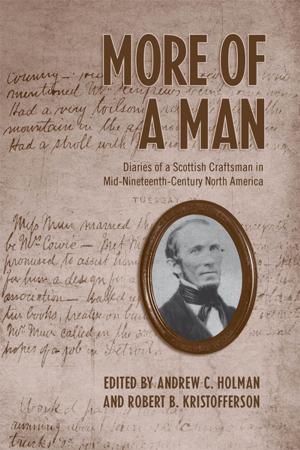Hopeful Travellers
Families, Land, and Social Change in Mid-Victorian Peel County, Canada West
Nonfiction, History, Americas, Canada| Author: | David Gagan | ISBN: | 9781487597351 |
| Publisher: | University of Toronto Press, Scholarly Publishing Division | Publication: | December 15, 1981 |
| Imprint: | Language: | English |
| Author: | David Gagan |
| ISBN: | 9781487597351 |
| Publisher: | University of Toronto Press, Scholarly Publishing Division |
| Publication: | December 15, 1981 |
| Imprint: | |
| Language: | English |
In this exploration of the nature of social reality in a mid-nineteenth-century Upper Canadian farming community, Professor Gagan employs the techniques of historical demography to reconstruct the population of mid-Victorian Peel County – specifically the histories of those families who occupied the county between 1845 and 1875. The evidence will be familiar to anyone who has tried to trace nineteenth-century Canadian family roots, but in this analysis the material is used to answer a broad range of questions related to the central problems of land availability and social change.
The author argues that in Peel County, as in the rest of Upper Canada, immigration, settlement, and population growth rapidly changed the previously agrarian frontiers of cheap and abundant farm land into mature agricultural communities. Patterns of inheritance, the timing of family formation, the size and structure of families, the life-cycle experiences of men, women, and children, chances for social betterment, and patterns of vocational and geographical mobility were all linked to the problem of land availability and all underwent subtle changes as rural society attempted to adjust to the new realities of life in the clearings.
This book is both s significant contribution to the social history of Ontario and to the growing corpus of comparative, international scholarship on the history of the family.
In this exploration of the nature of social reality in a mid-nineteenth-century Upper Canadian farming community, Professor Gagan employs the techniques of historical demography to reconstruct the population of mid-Victorian Peel County – specifically the histories of those families who occupied the county between 1845 and 1875. The evidence will be familiar to anyone who has tried to trace nineteenth-century Canadian family roots, but in this analysis the material is used to answer a broad range of questions related to the central problems of land availability and social change.
The author argues that in Peel County, as in the rest of Upper Canada, immigration, settlement, and population growth rapidly changed the previously agrarian frontiers of cheap and abundant farm land into mature agricultural communities. Patterns of inheritance, the timing of family formation, the size and structure of families, the life-cycle experiences of men, women, and children, chances for social betterment, and patterns of vocational and geographical mobility were all linked to the problem of land availability and all underwent subtle changes as rural society attempted to adjust to the new realities of life in the clearings.
This book is both s significant contribution to the social history of Ontario and to the growing corpus of comparative, international scholarship on the history of the family.















